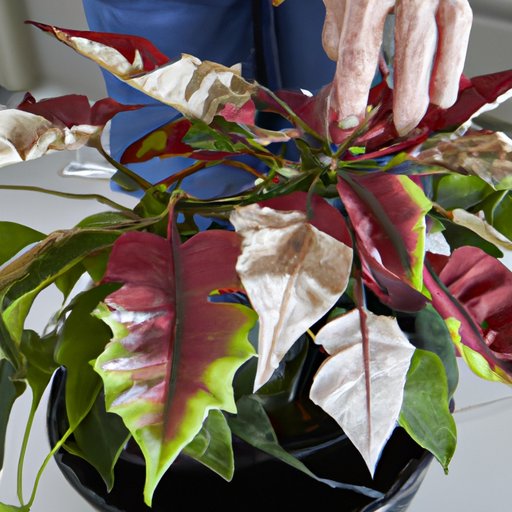Introduction
Poinsettias are popular holiday plants that are often seen adorning homes during the Christmas season. Native to Mexico, these beautiful plants have a long history of being associated with the holidays. With proper care, poinsettias can live for many years and become an integral part of your holiday decor. In this article, we’ll explore the basics of caring for poinsettias and ensure that your plant is healthy and vibrant for many years to come.
Provide Adequate Light and Temperature
In order to thrive, poinsettias need plenty of bright, indirect sunlight. Place your poinsettia in a spot where it will receive at least 6 hours of direct sunlight each day. It’s best to avoid placing your poinsettia near a drafty window or door, as cold drafts can damage the leaves. Additionally, poinsettias prefer temperatures between 65-70°F during the day and 60-65°F at night. Keep your poinsettia away from heat sources such as radiators or fireplaces.
Water Regularly
Poinsettias need to be watered regularly to keep their soil moist, but not soggy. Check the soil every few days by sticking your finger in the pot about an inch deep. If the soil feels dry, it’s time to water. Avoid overwatering, as this can cause root rot and other problems. Allow excess water to drain out of the bottom of the pot, then discard any remaining water in the saucer so the roots don’t sit in water.
Fertilize Once Per Month
Poinsettias benefit from regular fertilization. Use a balanced fertilizer designed for houseplants, and follow the instructions on the package for proper application. Fertilize your poinsettia once per month during the growing season (April to October). During the winter months, you can reduce fertilization to once every two months.
Prune and Pinch
Regular pruning and pinching of your poinsettia will help keep the plant looking its best. Remove any dead or damaged leaves, as well as any yellow or wilted foliage. You can also pinch off the tips of the stems to encourage branching. This will promote a fuller, bushier shape and make your poinsettia look more attractive.
Check for Pests
Poinsettias are susceptible to pests such as aphids, mealybugs, and scale insects. Check your plant regularly for signs of infestation, such as sticky residue on the leaves or small white bugs. If you do find pests, use an insecticidal soap or neem oil solution to get rid of them.
Repot if Necessary
If your poinsettia has outgrown its pot, it may need to be repotted. Choose a larger container with drainage holes in the bottom, and fill it with fresh potting soil. Gently remove the poinsettia from its current pot and place it in the new one. Make sure the soil is firmly packed around the roots and water thoroughly.
Discard After Blooming
Poinsettias typically bloom for about 6-8 weeks. After the bloom period is over, it’s unlikely that the plant will rebloom. At this point, you can discard the poinsettia or give it away. If you’d like to try and get your poinsettia to rebloom, follow the instructions outlined in the next section.
Conclusion
Caring for poinsettias is simple and straightforward. As long as you provide adequate light, temperature, water, and fertilizer, your poinsettia should thrive. Be sure to check for pests and repot if necessary. Finally, discard your poinsettia after it stops blooming, as it’s unlikely to rebloom. With these tips, your poinsettia will be a beautiful addition to your home for many years to come.


